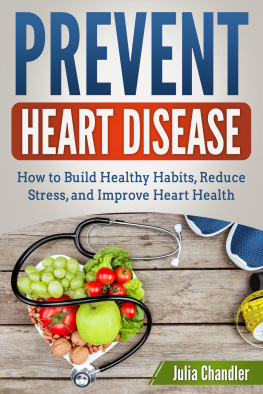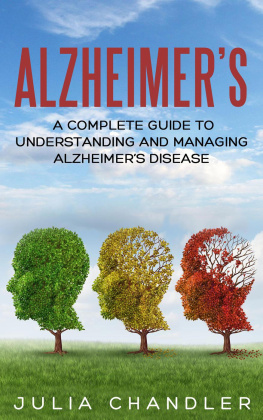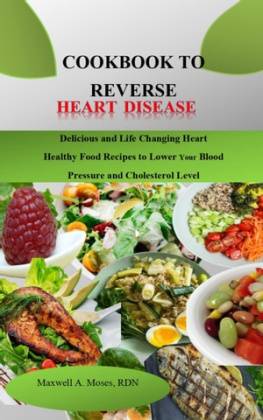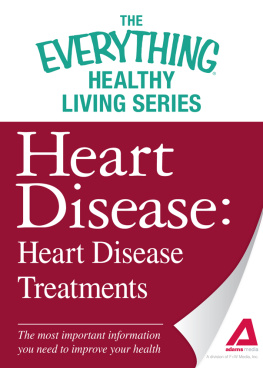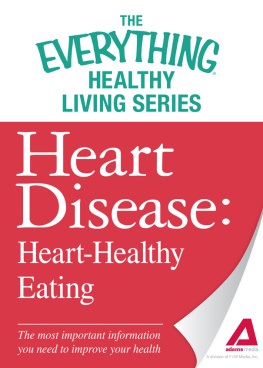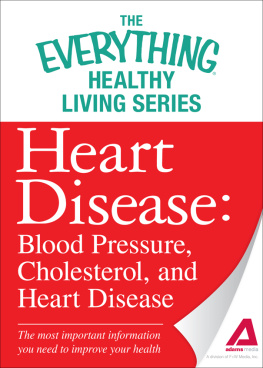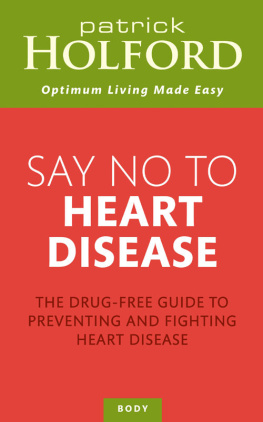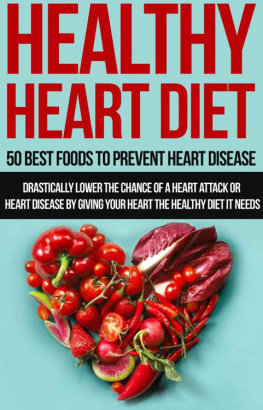Julia Chandler - Prevent Heart Disease: How to Build Healthy Habits, Reduce Stress, and Improve Heart Health
Here you can read online Julia Chandler - Prevent Heart Disease: How to Build Healthy Habits, Reduce Stress, and Improve Heart Health full text of the book (entire story) in english for free. Download pdf and epub, get meaning, cover and reviews about this ebook. year: 2019, publisher: Julia Chandler, genre: Home and family. Description of the work, (preface) as well as reviews are available. Best literature library LitArk.com created for fans of good reading and offers a wide selection of genres:
Romance novel
Science fiction
Adventure
Detective
Science
History
Home and family
Prose
Art
Politics
Computer
Non-fiction
Religion
Business
Children
Humor
Choose a favorite category and find really read worthwhile books. Enjoy immersion in the world of imagination, feel the emotions of the characters or learn something new for yourself, make an fascinating discovery.
- Book:Prevent Heart Disease: How to Build Healthy Habits, Reduce Stress, and Improve Heart Health
- Author:
- Publisher:Julia Chandler
- Genre:
- Year:2019
- Rating:5 / 5
- Favourites:Add to favourites
- Your mark:
Prevent Heart Disease: How to Build Healthy Habits, Reduce Stress, and Improve Heart Health: summary, description and annotation
We offer to read an annotation, description, summary or preface (depends on what the author of the book "Prevent Heart Disease: How to Build Healthy Habits, Reduce Stress, and Improve Heart Health" wrote himself). If you haven't found the necessary information about the book — write in the comments, we will try to find it.
According to the Centers for Disease Control and Prevention (CDC), heart disease continues to be the number one cause of death in the United States, taking around 630,000 individuals each year. Beyond that staggering statistic, the American Heart Association says that over 83 million Americans currently have heart disease or have had a stroke. Many people who carry a family history of heart disease and stroke worry about that serious risk.
Although family history and aging can increase your chance of having heart disease, 80% of heart disease cases can be attributed to behavioral risk factors, such as smoking, poor diet, lack of physical activity, stress, and poor hygiene.
This easy to understand guide will walk you through in-depth research and the most current information about how to improve the condition of the heart. By reading this book you will learn:
risk factors for heart disease;
healthy habits to boost your energy levels and improve heart health;
running and yoga training plans for a stronger heart;
the DASH diet plan; and
30 easy, healthy, and delicious DASH diet recipes.
This book will help you take control of your health and prevent heart disease for good.
Download Prevent Heart Disease now!
Julia Chandler: author's other books
Who wrote Prevent Heart Disease: How to Build Healthy Habits, Reduce Stress, and Improve Heart Health? Find out the surname, the name of the author of the book and a list of all author's works by series.

